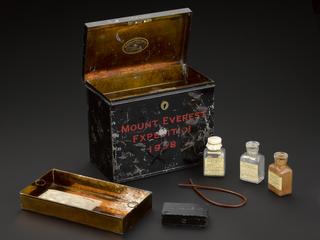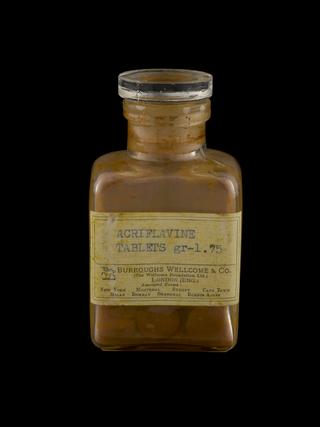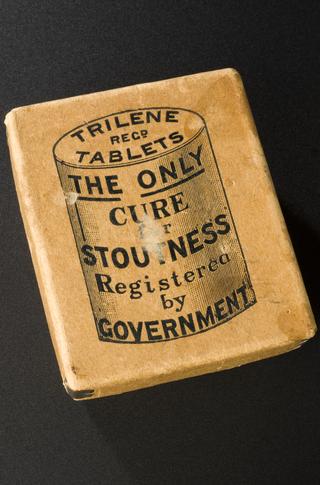
Original preparation of quinine by Pelletier and Caveton
- maker:
- Pierre Joseph Pelletier and Jean Bienaime Caventou


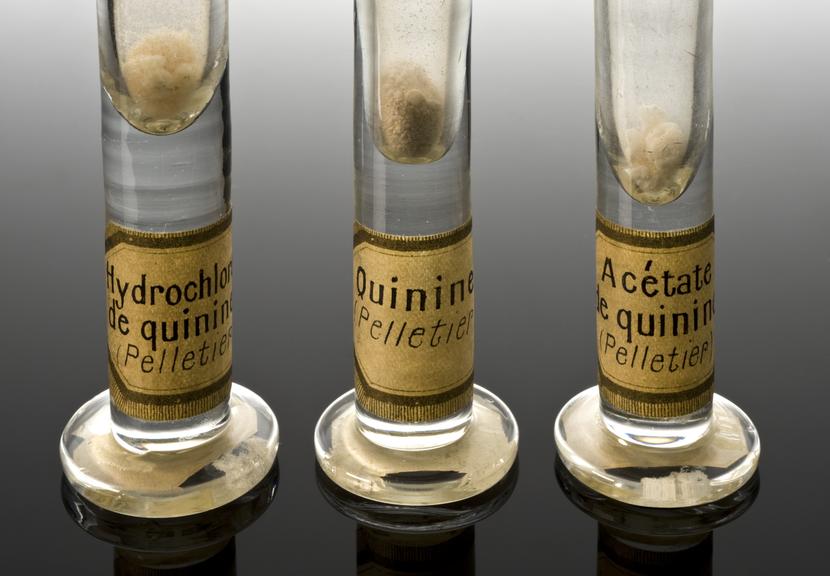
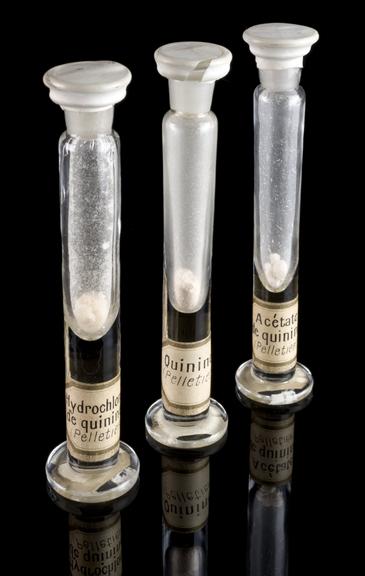
Original preparation of quinine by Pelletier and Caveton, 1820
In 1820, Pierre Joseph Pelletier (1788-1842), a French chemist, and Joseph Caventou (1795-1877), a French pharmacist, isolated quinine and extracted it from cinchona bark. Cinchona had long been used to treat fevers, most notably malaria. Quinine is what makes the bark so effective as a treatment for the disease. This preparation was made by Pelletier and Caventou and was collected by Captain Peter Johnston-Saint, one of Henry Wellcome’s agents, in 1934. It is shown here with similar examples (A182555 and A182556).
Details
- Category:
- Materia Medica & Pharmacology
- Collection:
- Sir Henry Wellcome's Museum Collection
- Object Number:
- A182561
- Materials:
- bottle, glass and cover, plastic
- Measurements:
-
overall: 144.5 mm 25 mm, .06 kg
- type:
- bottle
- credit:
- Behal
